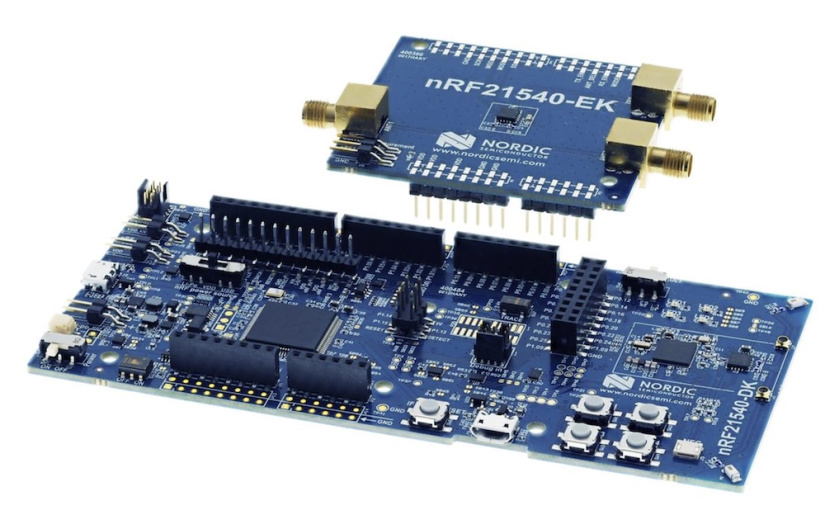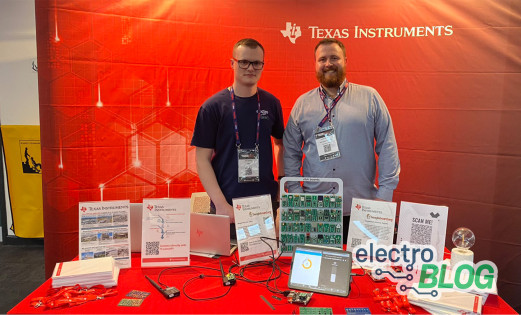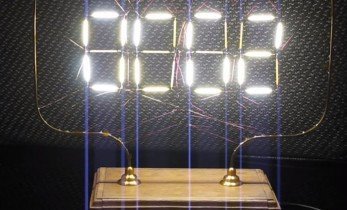Maker Board Spotlight: nRF21540 Development Bundle
When it comes to wireless communication protocols, makers have numerous options at their disposal including Wi-Fi, Zigbee, and Cellular. However, one connection protocol that stands above the rest for its low-energy consumption is Bluetooth, and numerous SoCs now come with Bluetooth as standard (such as the ESP32). The low-energy nature of Bluetooth allows for projects to operate on batteries for extended periods, and some commercial products can even do without the battery entirely and utilise energy harvesters.

But as much as we all love Bluetooth, the low-energy properties also mean that Bluetooth has a pathetic range which while isn’t problematic for some devices (such as headphones), can be extremely challenging for IoT devices and those needing long-range communication. The range of Bluetooth can be extended with an RF amplifier, but many of these have fixed outputs, and makers need to be careful with the output power output of their amplifier.
To solve these challenges, Nordic has developed the nRF21540 RF Amplifier which not only amplifies 2.4GHz signals for both transmitters and receivers but also offers programable output powers. While the nRF21540 offers 13dB gain for reception and 21dB gain for transmission, it comes in a QFN package which is not the most prototype-friendly package. Thus, Nordic has taken the nRF21540 and created the nRF21540 Development Bundle!
What’s included in the nRF21540 Development Bundle?
The nRF21540 DB combines two other evaluation products made by Nordic, the nRF21540 DK and the nRF21540 EK. The nRF21540 DK is a development kit that integrates a Nordic SoC with the nRF21540 FEM and other programming tools to allow for immediate development within the Nordic Connect Desktop app.

nRF21540 Development Bundle
The nRF21540 EK is an evaluation kit that integrates the nRF21540 on a PCB with pin headers and various SMA connectors for testing and experimenting with the nRF21540. The EK PCB follows the Arduino Shield format so it can be plugged into Arduino-compatible designs, and all controls are accessible over GPIO and SPI.
As such, the nRF21540 DB actually provides two separate nRF21540 devices that can be used independently from each other and separated by any distance. This allows makers to not only play with the nRF21540, but also measure its reception and transmission capabilities while also designing projects that use Bluetooth for bidirectional communication.
nRF21540 DB Specifications
The nRF21540 DB is comprised of the nRF21540 DK and nRF21540 EK which are both uniquely different devices.
The nRF21540 DK is a single-board development kit that integrates the nRF21540 FEM along with an nRF52840 SoC. The nRF52840 SoC itself has a 64MHz ARM Cortex-M4 with FPU, 1MB flash, 256KB RAM, Bluetooth 5.3 support, IEEE 802.15.4 radio support, and numerous peripherals including full-speed USB 12Mbps, NFC-A tag, QSPI, I2C, PDM, QDEC, EasyDMA, 128-bit AED, and on-chip DC-DC buck converter. The nRF21540 DK also integrates a Segger J-Link debugger that uses USB for communication, 4 user programmable LEDs, 4 user programmable buttons, an NFC-A tag port, and SWF RF ports for direct RF measurements from the nRF21540. With regards to wireless protocols, the nRF21540 DK supports Bluetooth, Zigbee, mesh networking, and Thread.

The nRF21540-DK
The nRF21540 EK is an evaluation kit that integrates a single nRF21540 RF FEM onto a PCB with pin headers for connecting to other circuits. The layout of the pin headers follows the Arduino Shield standard which allows for the nRF21540 EK to be used with Arduinos and other Arduino-compatible microcontroller devices. At the same time, the nRF21540 EK integrates numerous SMA connectors that allow for lab testing of the nRF21540 including signal injection and output power detection. The nRF21540 offers TX gain control which can be done either using GPIO, SPI, or a combination of both, and all of these signals are connected to the various pin headers.

The nRF21540-EK
As both development boards use the nRF21540, they have the same characteristics with regard to radio power (21db transmission gain and 13dB reception gain), have two additional antenna output ports for diversity support, can operate in temperature ranges from -40˚C to +105˚C making it suitable for many environments, and consumes a maximum of 110mA when operating at maximum power (the sleep current for the nRF21540 is 45nA).
What can you do with the nRF21540 DB?
The first, and most obvious, use of the nRF21540 DB is to test out the features offered by the nRF21540 DB. The nRF21540 DK enables direct control of the nRF21540 via the onboard nRF52840 SoC, and the onboard debugger makes programming a breeze supporting breakpoints, single stepping, and event triggering.
The second use for the nRF21540 DB is to test out bidirectional communication with the nRF21540. As the nRF21540 DB comes with two separate nRF21540 devices, it is possible to create two individual Bluetooth devices that can transmit and receive over large distances. Furthermore, the nRF21540 EK included in the nRF21540 DB uses an Arduino Shield format, and this means that it can work with the Arduino Uno, Arduino Mega, and other compatible development boards. Testing both nRF21540 devices allows engineers to identify the challenges faced with long-distance Bluetooth such as signal strength, battery lifetime, and signal reliability.
Additionally, the mesh capabilities of the nRF21540 DK thanks to the nRF52840 allow for makers to test out their own IoT mesh networks using Bluetooth. The addition of the nRF21540 FEM allows for the development of long-range IoT devices which can be especially useful in remote locations (such as forests, farmland, and mountains).
Who should buy the nRF21540 DB?
Anyone looking to work with Nordic devices and interested in Bluetooth should definitely get the nRF21540 DB. The ability to use the Nordic range of devices with the Visual Studio IDE and the free Nordic Connect Desktop SDK allows both individuals and organisations to get straight into code development. At the same time, the numerous features packed into the nRF21540 DK remove the need for external programmers, USB devices, or modules.
Additionally, those looking to test out advanced features of Bluetooth such as mesh networks will also be able to take advantage of the nRF21540 DK as it integrates the nRF52840 which also supports Zigbee, Thread, and proprietary 2.4GHz.
Finally, those who are looking to take their project to the next level will do well with Nordic devices. While Nordic products can sometimes be complex to use, they are without a doubt professional engineering devices that have been tried and tested throughout all industries and applications. Check out our video below which shows how to get sharted with the Nordic Thingy:91.
Final Thoughts
Bluetooth is a great wireless protocol, but its range has much to be desired. Trying to extend the range of Bluetooth can be tricky, and many RF amplifiers lack output gain controls which can make certification in different jurisdictions challenging. The nRF21540 is an excellent radio solution, but the QFN package is hardly prototype friendly which is why the nRF21540 DB provides makers and professionals alike with an excellent prototyping platform. By no means is the nRF21540 DB simple, but it significantly simplifies long-range Bluetooth development, and could very well power your next device!















































Leave your feedback...